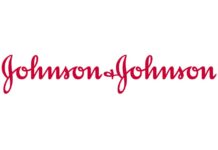PRINCETON, N.J.– UroGen Pharma Ltd. (Nasdaq: URGN), a biotech company dedicated to developing and commercializing novel solutions that treat urothelial and specialty cancers, today announced that it has filed a lawsuit in the U.S. District Court for the District of Delaware against Teva Pharmaceuticals, Inc., Teva Pharmaceuticals USA, Inc., and Teva Pharmaceutical Industries, Ltd., alleging infringement of U.S. Patent Numbers 9,040,074 (“the ’074 patent”) and 9,950,069 (“the ’069 patent”). Both patents are listed in the U.S. Food and Drug Administration’s (“FDA”) Approved Drug Products with Therapeutic Equivalence Evaluations (commonly known as the Orange Book) for JELMYTO® (mitomycin) for pyelocalyceal solution. JELMYTO® is indicated for the treatment of adults with low-grade, upper tract urothelial cancer (“LG-UTUC”) and utilizes UroGen’s RTGel® reverse-thermal hydrogel, a proprietary sustained-release, hydrogel-based platform technology.
“UroGen pioneered a significant breakthrough and remains at the forefront of transforming urothelial cancer treatment,” said Liz Barrett, President and CEO, UroGen. “UroGen has full confidence in the strength of its patents and plans to vigorously defend our intellectual property rights.”
The lawsuit follows an Abbreviated New Drug Application filed by Teva Pharmaceuticals, Inc., which seeks authorization from the FDA to manufacture, use or sell a generic version of mitomycin for pyelocalyceal solution, 40 mg/vial in the United States before the expiry of the ’074 and ’069 patents.
JELMYTO® (mitomycin) for pyelocalyceal solution is a mitomycin-containing reverse thermal gel containing 4 mg mitomycin per mL gel indicated for the treatment of adult patients with LG-UTUC. It is recommended for primary treatment of biopsy-proven LG-UTUC in patients deemed appropriate candidates for renal-sparing therapy. JELMYTO is a viscous liquid when cooled and becomes a semi-solid gel at body temperature. The drug slowly dissolves over four to six hours after instillation and is removed from the urinary tract by normal urine flow and voiding. It is approved for administration in a retrograde manner via ureteral catheter or antegrade through nephrostomy tube. The delivery system allows the initial liquid to coat and conform to the upper urinary tract anatomy. The eventual semisolid gel allows for chemoablative therapy to remain in the collecting system for four to six hours without immediately being diluted or washed away by urine flow.
Urothelial cancer is the ninth most common cancer globally and the eighth most lethal neoplasm in men in the U.S. Between five percent and ten percent of primary urothelial cancers originate in the ureter or renal pelvis and are collectively referred to as upper tract urothelial cancers (UTUC). In the U.S., there are approximately 6,000 – 7,000 new or recurrent low-grade UTUC patients annually. Most cases are diagnosed in patients over 70 years old, and these older patients often face comorbidities. There are limited treatment options for UTUC, with the most common being endoscopic surgery or nephroureterectomy (removal of the entire kidney and ureter). These treatments can lead to a high rate of recurrence and relapse.






